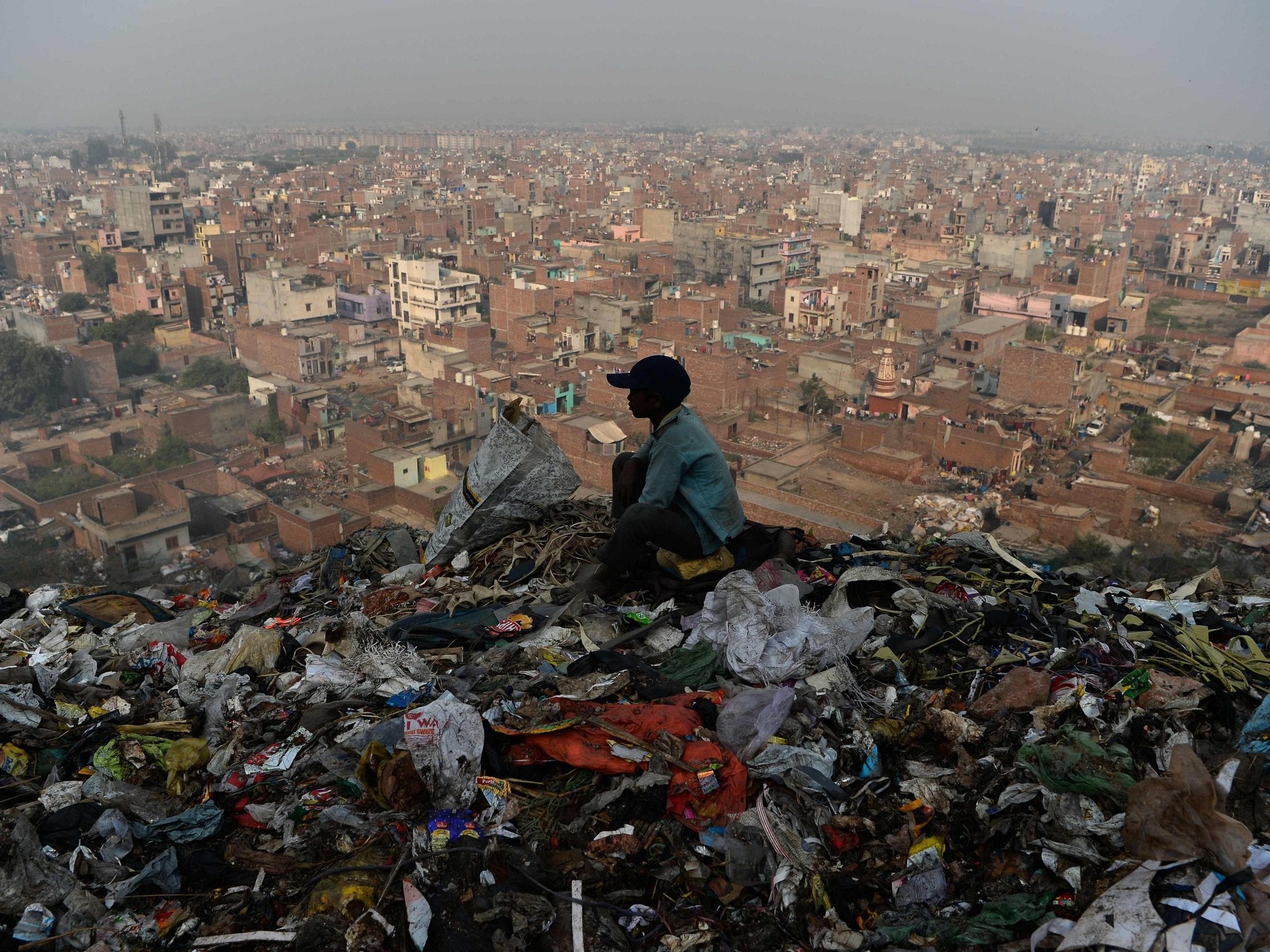The Independent's journalism is supported by our readers. When you purchase through links on our site, we may earn commission.
World's richest get richer while planet's poorest get poorer, new Oxfam report shows
Charity makes estimate in annual move to shine spotlight on growing global wealth inequality

The world’s wealthiest individuals grew richer last year while the wealth of the bottom half of the world’s population went backwards, according to new calculations by Oxfam.
The charity makes the estimate today in what has become its annual attempt to shine a spotlight on planetary wealth inequality, to coincide with the gathering of many of the international economic and political elite in Davos for the World Economic Forum.
Using data from Forbes magazine, which keeps track of the fortunes of the richest individuals on the planet, the charity calculates that the total wealth of around 2,000 dollar billionaires rose by 12 per cent between March 2017 and March 2018.
It contrasted this with estimates from analysts at the Swiss bank Credit Suisse which suggest that between the middle of 2017 and the middle of 2018 the total dollar wealth of the bottom half of humanity – some 3.8 billion people – fell by around 11 per cent.
“The way our economies are organised means wealth is increasingly and unfairly concentrated among a privileged few while millions of people are barely subsisting,” said Matthew Spencer, Oxfam’s director of campaigns.
The charity is calling on national governments to increase taxes on wealth and use the revenues to provide better health and other public services.
“Women are dying for lack of decent maternity care and children are being denied an education that could be their route out of poverty. No one should be condemned to an earlier grave or a life of illiteracy simply because they were born poor,” said Mr Spencer.
Economists generally agree that the level of global inequality is large and many agree with Oxfam that redistributive wealth taxes are warranted.
But many analysts also stress that in recent decades the share of the world population living in poverty – surviving on less than $2 a day – has fallen sharply from 44 per cent in 1980 to 9.6 per cent in 2015 according to World Bank data.
This is largely due to economic growth in large poor countries such as China and India as they have opened themselves up to global commerce.
Branko Milanovic, the pre-eminent researcher on global income inequality, has estimated that international income inequality (as opposed to wealth inequality) fell between 1988 and 2008 for the first time since the Industrial Revolution.
The Credit Suisse analysis upon which Oxfam bases its estimate of the fortunes of the bottom 50 per cent of the world population also shows a slightly different story about the trend in the wealth share of those at the top.
It found that the share of wealth of the top 1 per cent declined slightly in 2018, from 47.5 per cent to 47.2 per cent.
“While it is too early to say that wealth inequality is now on a downward trend, the prevailing evidence suggests it may well have levelled out, albeit at a very high level,” Credit Suisse’s team wrote.
Estimating the wealth of those at the very top of the wealth pyramid – not the top 1 per cent but the highest 0.1 per cent, 0.01 per cent and beyond – is difficult because the super-rich do not tend to participate in the surveys that national statisticians use to estimate the broad distribution of wealth.
Analysts tend to use rich lists such as those compiled by Forbes to make their estimates, yet there may be problems in comparing year-to-year trends from these lists and the results derived from broad surveys.
In Monday’s report Oxfam also estimates that 26 of the richest people in the world own as much wealth as the bottom half of the world’s population put together, down from 43 in 2017.
But the use of different data sources and the fact that estimates of the aggregate wealth of the bottom half of the population are rough estimates, often based on statistical extrapolations due to data gaps for some countries, means great weight should not be put on such comparisons.
In 2017 the charity had inititally estimated that just eight of the world’s richest had as much wealth as the bottom half, before data revisions shifted this to 61.
Another important technical question is whether to make comparisons of global wealth shares based on dollar values at market exchange rates – which can skew short-term trends if the US currency rises sharply against the currencies of poor countries – or to use less volatile Purchasing Power Parity estimates. The Credit Suisse shares are based on market exchange rates.
One more complicating factor is that the wealth of the very richest is heavily influenced by quoted share prices. Since March last year the MSCI Index of world shares has fallen by around 5 per cent, which will likely have dented the net worth of many dollar billionaires.
An individual would need net assets of $4,210 (£3,300) to be among the wealthiest half of the world population in mid-2018, according to Credit Suisse, meaning the majority of people in the UK would be in this category.
Join our commenting forum
Join thought-provoking conversations, follow other Independent readers and see their replies
Comments